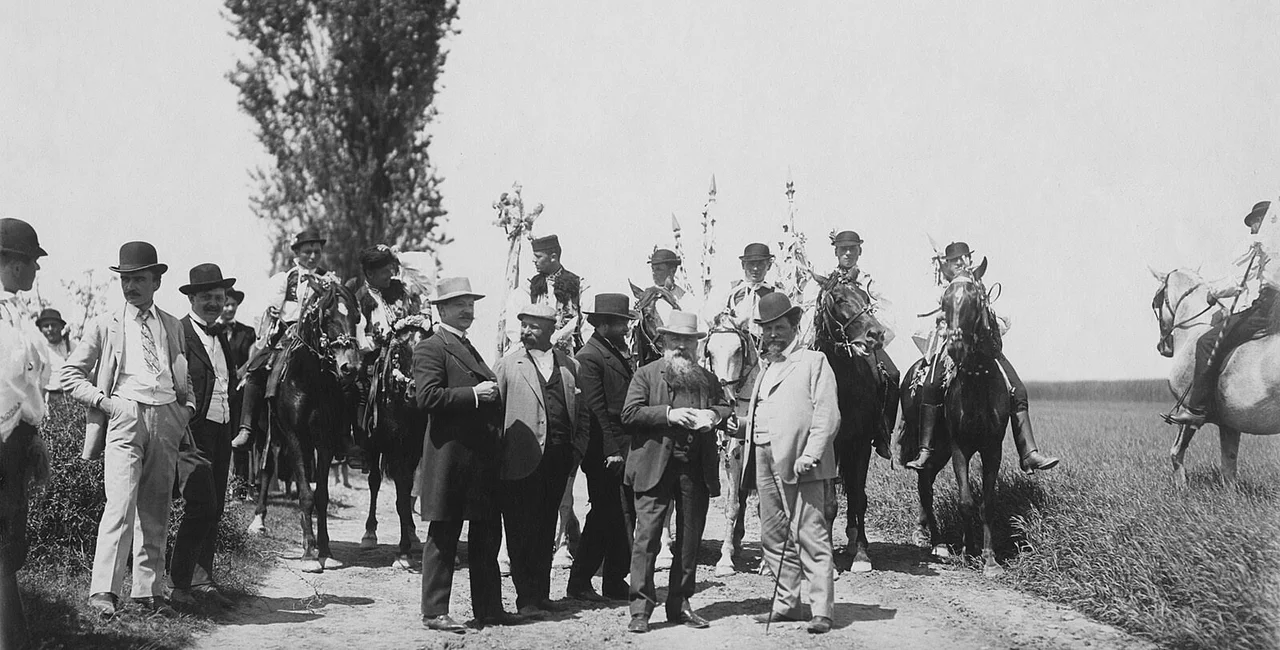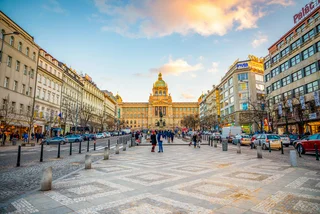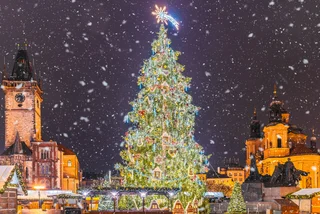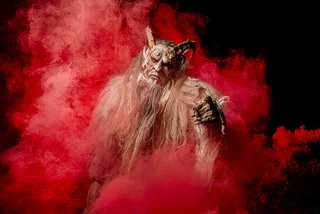A life-size, male sculpture with an arm placed on his head: this is Auguste Rodin’s “Age of Bronze,” one of the highlights of the Prague City Gallery. Beyond the tense yet harmonious bronze figure, which took the art world by storm in 1876, lies an interesting connection tying together the Paris and Prague art scenes. The current exhibition “Prague Pallas & Moravian Hellas 1902: Auguste Rodin in Prague and Moravia” explores the French sculptor’s momentous trip to the Czech lands, then part of the Austro-Hungarian empire, and its lasting legacy on the local art scene.
Rodin in a nutshell
- His magnum opus is The Gates of Hell, a monumental bronze sculptural group work inspired by Dante Alighieri's Inferno. The six-meter-high work includes figures ranging from palm-size to one meter tall, some of which were then turned into standalone pieces.
- One of them is The Thinker, Rodin’s most famous work showing a male figure sitting on a rock in a pensive pose.
- Another is the aforementioned Age of Bronze, which was criticized for its naturalism, and departure from the classical tradition of depicting heroes or historical figures in sculpture. Due to his uncanny depiction of the male body, Rodin was even accused of taking a mold of a dead body that he passed off as a sculpture.
- The Eternal Idol, which features a naked couple, had several versions, both in bronze and in marble. Some interpret it as a declaration of love for his mistress and fellow sculptor Camille Claudel, who achieved acclaim in her own right for her sculptures, albeit posthumously.
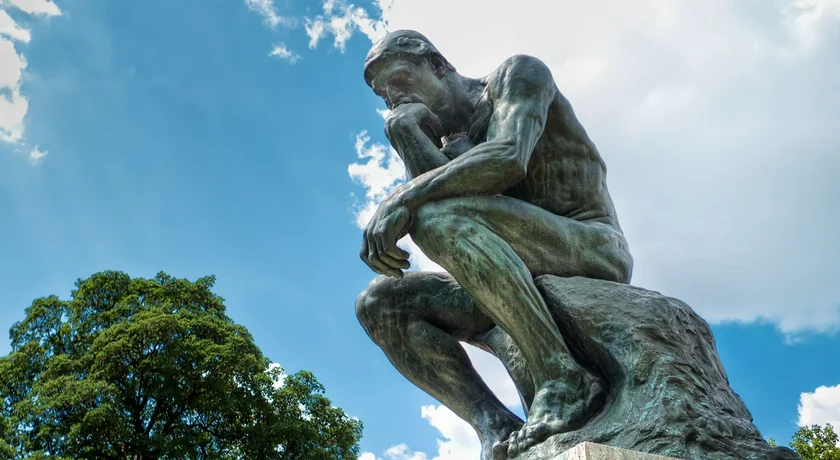
A packed schedule
Rodin arrived in Prague in May 1902, aged 62, at the peak of his artistic career. At that time, Paris was the artistic innovation capital of the world, a fact that Czech sculptors were well aware of. The purpose of the trip was Rodin’s exhibition in Prague organized by the Society of Fine Artists Mánes, which was his largest exhibition abroad at the time.
The sculptor received a welcome worthy of a rockstar upon arrival in the Czech capital, which the current exhibition captures in noteworthy photographs. In addition to stern-looking city officials, the crowd that constantly surrounds Rodin includes prominent names of the early 20th Czech art scene, such as painter Alfons Mucha. Last but not least, it also features a flock of well-heeled ladies of all ages, possibly aware of Rodin’s reputation as a ferocious lovemaker.
The artist might have felt a tad bit overwhelmed by his reception, as he cancelled a number of appearances planned for his stay in Prague.
“Rodin will certainly not forget Prague. He will remember with horror and trembling the city where they squeezed what they could out of him like out of a lemon, and, in addition, wrote about his hardships with utmost cannibalistic gluttony,” said an article about his visit titled “Echoes and Leftover,” which was published in the Rozhledy magazine after his visit.
Meeting Ancient Greek perfection in Moravia
After his Prague stay, Rodin went on to Slovácko (Moravian Slovakia), where, among other stops – such as for the Macocha Abyss – he visited the Exhibition of Slovak and Moravian Artists in Hodonín as well as an “authentic” all-Moravian-Slovak festival. The caveat? While such festivals take place for specific holidays, this one was just for show. According to Rodin’s posse, the artist appreciated the charms of local customs and costumes, which you can also see in the present exhibition.
Czech painter Zdenka Braunerová writes in “Description of Rodin’s journey to Slovacko”“‘Look,’ he said to me, looking at the tip of the colorfully embroidered upper skirt of a slender young beauty, 'look at the variety of colors, there is a harmony in them that only the eye of the Greeks could bear. I feel that I am here on the soil of the oldest culture'.”
What marks did Rodin leave on Czech art?
One of the most valuable takeaways was the Czech art scene’s readiness to embrace and be part of contemporary, avant-garde culture. It is worth noting that, despite general acclaim from French cultural institutions, there was a lack of consensus about the value of Rodin’s work. His sculpture representing French novelist Honoré de Balzac, nowadays seen as a torch-bearer of modernism in sculpture, was initially derided as grotesque and variously compared to a penguin and a pig in a sack by his contemporaries.
Painter Arnošt Hofbauer in a speech during Rodin's visit at Old Town HallIt is the first time that foreign art has come to us and that we are able to understand it. Hitherto it was really impossible for us, because our nation was young artistically, and was forced to be concerned mainly with its own artistic development. It is only now that we can dare to explore without fear of losing our individuality.
The most conspicuous Prague homage to Rodin is sculptor Ladislav Jan Šaloun’s “Monument to Jan Hus” in Old Town Square, which shows the reformer surrounded by Hussite warriors in a posture reminiscent of Rodin’s “Burghers of Calais.”
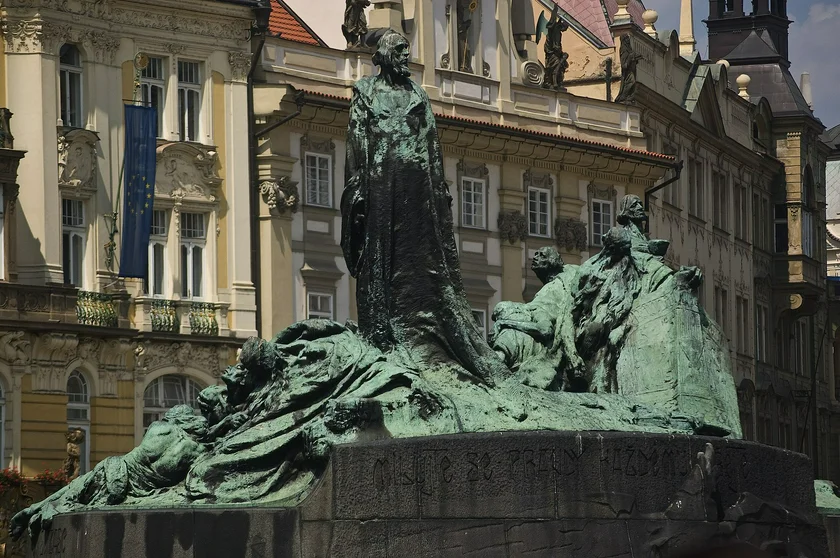
The visit was also important for cultural diplomacy, and in particular for nationalist politicians of the era, which want to emphasize the Czech character of Slovácko. The endeavor came with a stiff price tag, which the organizers of Rodin's visit and accompanying program took years to pay off.
A friend from Prague
A few months after his return to Paris, in September 1902, Rodin was to strike an unlikely friendship with a Prague-born artist, the German-language poet Rainer Maria Rilke. Their artistic and spiritual connection, which developed despite an age gap of more than three decades, is the subject of art historian Rachel Corbett’s book “You Must Change Your Life.”
“Over the course of about five years Rilke came and went, and really he was a kind of apprentice, in the sense that he wanted to learn how to see like an artist, “ Corbett told Czech Radio, adding “He wanted to observe and learn how Rodin lived.”
The result is Rilke’s “Auguste Rodin,” which the sculptor praised as the “supreme interpretation of his work.” The book was also a turning point in Rilke’s style, acting as a crucible for his previous Romantic influences, and a bridge towards later Expressionistic works.
And how did 26-year old Rilke see Rodin's works? "The depths of the nights of love unfolded themselves to him and revealed the dark, sorrowful and blissful breadth of a realm like that of a still heroic world in which there were no garments, in which faces were extinguished and bodies were supreme. With senses at white heat he sought life in the great chaos of this wrestling, and what he saw was Life."
The exhibition Prague Pallas & Moravian Hellas - 1902: Auguste Rodin in Prague and Moravia runs until Jan. 29, 2023 at the Prague House of Photography.












 Reading time: 5 minutes
Reading time: 5 minutes 